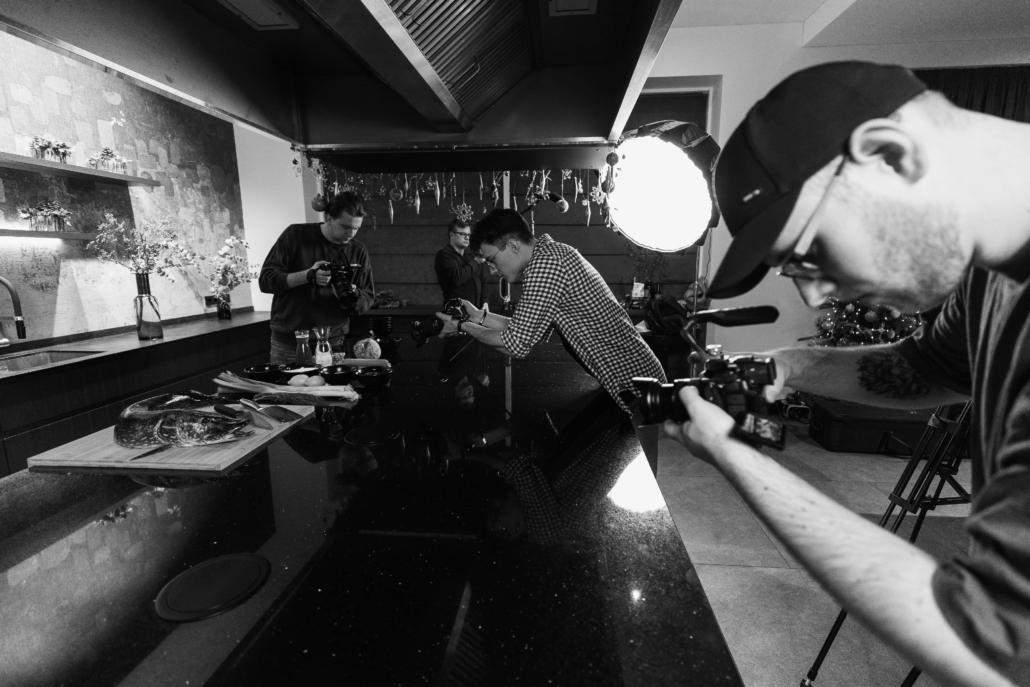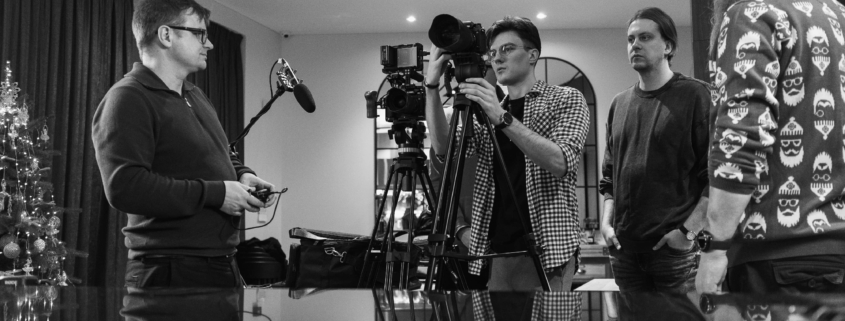Video clip creation and 4 latest trends
Video clip creation and 4 latest trends
When the new year knocks on the door, everyone rushes to look at the forecasts: what to expect, what will be fashionable, how not to miss out and be the first to get on the trend train. Therefore, it is inevitable that the creation of video clips is also changing its face, including the most popular modern innovations in the production process.
Videos are everywhere. They accompany you in every step of your daily life: on phones, computers, TVs, outdoor stands and even smart watches. People are watching more and more video content, and whether it's a three-hour podcast or a short commercial "reels", this advertising medium will not go away from the top of the trend.
However, creating video clips is not only about filming and editing. The first and most important step starts with an idea, a strategy and a scenario born from it. And after that, there are technical subtleties that are left to professionals videographers hands, effortlessly transforms into an eye-catching end result. But what is fashionable today in the world of audiovisual arts and what modern solutions should be taken into account when planning the production of a future video?

Video clip creation and 4 latest trends
Trend 1: Artificial Intelligence (AI)
Advances in artificial intelligence are inevitably changing many areas, including the way video content is created and distributed. Artificial intelligence can be used to improve image quality, generate animations, automate tasks or even to better understand the target audience. For example, one of the most popular video editing programs, Adobe Premiere Pro, uses AI to improve image and sound quality, and if you don't feel comfortable in front of the camera yourself, the prepared text can be read by an avatar created by artificial intelligence.
AI can also automate tasks like transcription or translation: YouTube has been using AI to automatically translate videos into different languages for some time. And here, the well-known platform Netflix uses AI to create lists of recommended movies, series or shows based on the user's viewing habits, which allows it to analyze the target audience and create even more interesting content based on its needs.
Trend 2: Short, vertical, and even silent videos
Short videos, mostly seen on the TikTok and Instagram platforms, have been hitting the peaks of popularity for years. They are easy to watch, easy to share and engage the viewer, capturing the necessary attention in the fast pace of life, where everything is short on time. Conducted research shows that the current young Gen Z generation is looking for information on the TikTok social network instead of the traditional "Googling", and the mobile smartphone has long replaced the computer screen. That is why vertical, 9:16 format videos are one of the most practical solutions today.
But with some habits come others. Most regular Internet surfers watch video content without sound: in line at the doctor's office, on the bus or during breaks between jobs. Therefore, subtitles become an almost necessary tool, at the same time reaching that part of the audience that has difficulty understanding the information to be conveyed by sound alone.
All major social media platforms are filled with short-form video these days, and this trend is only going to grow. creating video clips will continue to solve the task of how to fit the most important and relevant message into those few tens of seconds.
Trend 3: Live Streams
Live video streaming is a powerful tool to connect with your audience in real-time, and a live stream captures viewers' attention for a longer period of time. It's an authentic and interactive marketing solution, but it takes preparation and practice to perform well. Rehearse, but do not forget to be natural when interacting with the audience. Also, keep in mind that streaming video live requires a fast internet connection and pre-prepared equipment or even a person responsible for overseeing it during the broadcast, because the viewer, unfortunately, will not wait for you to fix the microphone or rearrange the lights live.
Trend 4: Immersive videos
Videos created using virtual reality (VR), augmented reality (AR) or 360-degree footage immerse viewers in a more realistic experience than ever before. VR allows you to find yourself in a computer-generated world as if you were actually visiting historical places or traveling to space; augmented reality (AR) complements the representation of the real world in real time with elements of computer graphics that provide additional information about the observed object, and the 360-degree filming angle invites the viewer to the whirlwind of action taking place around him, be it a concert hall or a picture gallery.
The social media landscape has changed dramatically over the past few years, from the sudden rise of TikTok to short videos on basically every other platform. But video isn't just social media—it includes people's habits, search engine results, shopping behavior, or even the tools we learn from.
Creating video clips is now accepted as a powerful marketing tool. However, it is a rapidly developing medium that requires high quality and creative, original solutions, because you will no longer interest a picky audience. We all have the equipment capable of filming in our hands, but that is not enough: a professional director, producer, videographer and editor – important people in the team, whose essential task is the creation of video clips. And the fact that artificial intelligence is advancing by leaps and bounds, unfortunately, does not yet mean that it can match human imagination and creativity.



